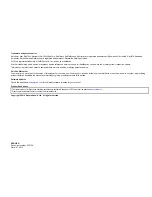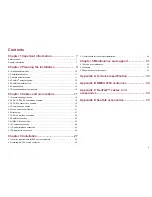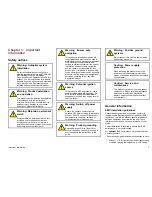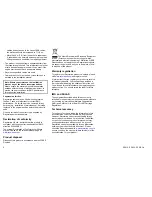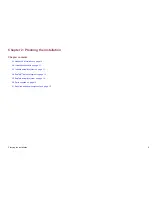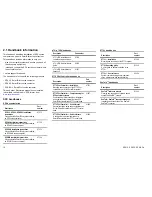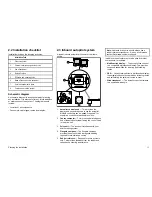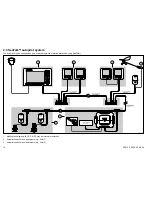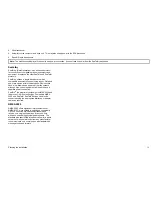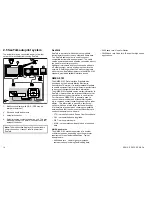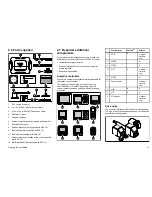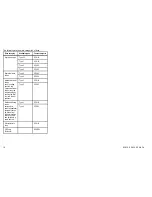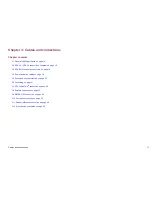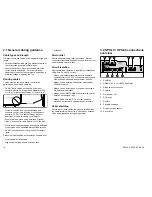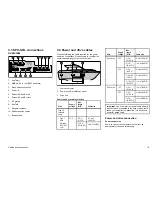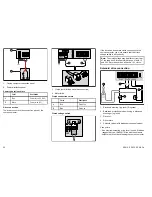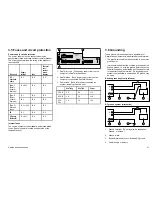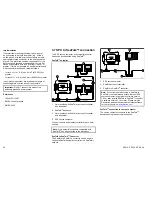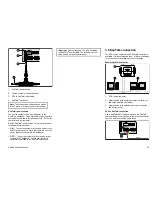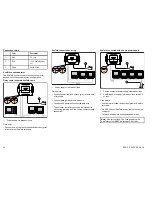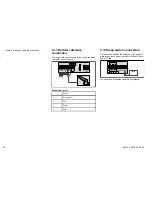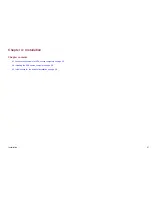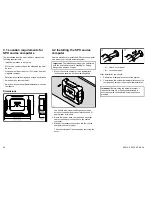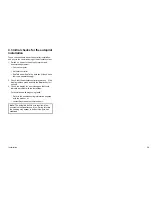
2.5 SeaTalk autopilot system
The autopilot may be connected as part of a wider
network of marine electronics using SeaTalk.
2
3
1
12 / 24 V
SMART
PILOT
D10434-2
SeaTalk
SeaTalk
SeaTalk
4
1.
Multifunction display with GPS. (GPS may be
internal or external.)
2.
Wind and depth instruments
3.
Autopilot controller
4.
Autopilot course computer and drive unit. This may
also supply power to SeaTalk instruments and the
autopilot controller.
Note:
The multifunction display will require its own
power connection. It cannot take its power from
SeaTalk.
SeaTalk
SeaTalk is a protocol which enables compatible
instruments to connect to each other and share data.
The SeaTalk cable system is used to connect
compatible instruments and equipment. The cable
carries power and data and enables connection without
the need for a central processor.
Additional instruments and functions can be added to
a SeaTalk system, simply by plugging them into the
network. SeaTalk equipment can also communicate
with other non-SeaTalk equipment via the NMEA 0183
standard, provided a suitable interface is used.
NMEA 0183
The NMEA 0183 Data Interface Standard was
developed by the National Marine Electronics
Association of America. It is an international standard
to enable equipment from many different manufacturers
to be connected together and share information.
The NMEA 0183 standard carries similar information to
SeaTalk. However it has the important difference that
one cable will only carry information in one direction.
For this reason NMEA 0183 is generally used to
connect a data receiver and a transmitter together,
e.g. a compass sensor transmitting heading to a radar
display. This information is passed in ‘sentences’,
each of which has a three letter sentence identifier.
It is therefore important when checking compatibility
between items that the same sentence identifiers are
used some examples of which are:
• VTG - carries Course and Speed Over Ground data.
•
GLL - carries latitude and longitude.
•
DBT - carries water depth.
•
MWV - carries relative wind angle and wind speed
data.
NMEA baud rates
The NMEA 0183 standard operates at a number
of different speeds, depending upon the particular
requirement or equipment capabilities. Typical
examples are:
• 4800 baud rate. Used for general purpose
communications, including FastHeading data.
• 9600 baud rate. Used for Navtex.
• 38400 baud rate. Used for AIS and other high speed
applications.
14
SPX10, SPX30, SPX-SOL
Содержание SPX 10
Страница 2: ......
Страница 4: ......
Страница 6: ...6 SPX10 SPX30 SPX SOL ...
Страница 30: ...30 SPX10 SPX30 SPX SOL ...
Страница 36: ...36 SPX10 SPX30 SPX SOL ...
Страница 37: ......
Страница 38: ...www raymarine com ...



